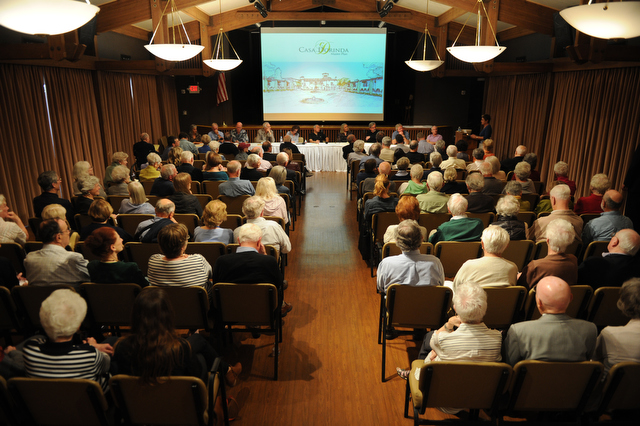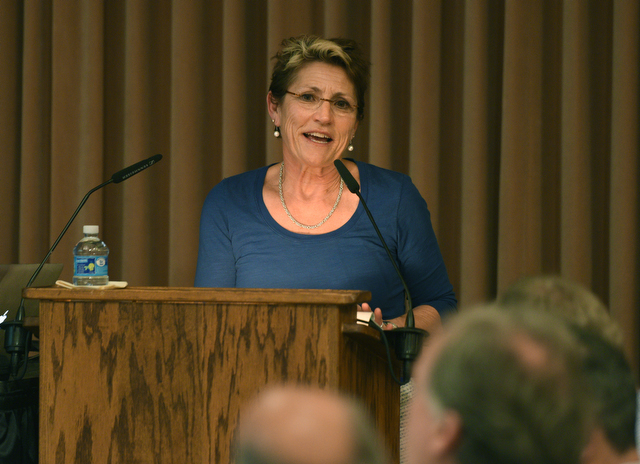Casa Dorinda ‘Needs a Facelift’
Plans 100,000-Square-Foot, $40 Million Expansion

When it comes to Montecito, two things are certain: The average age of its population is getting older. And never mess with its neighbors. Such was evident Monday evening at a dramatic meeting of the Montecito Association’s Land Use Committee, at which the $40 million, 100,000-square-foot expansion plans for Casa Dorinda were deliberated by mixed bag of speakers.
A mazelike property adjacent to open space and hiking trails, the senior living community is undeniably magnificent. Philanthropist Anna Dorinda Blaksley Bliss, who also founded the Santa Barbara Botanic Garden, built Casa Dorinda in 1918 with her husband, William. It became a senior community in 1975, now made up of 30 buildings on 48 acres.
Like many of its residents, Casa Dorinda needs a facelift: Those were the words of one commenter who supported the proposal to build 32 new units — 20 independent living (cottage-style, studio, or one-bedroom) and 12 assisted living units (personal and memory care). The plan includes a 5,000 square-foot dining facility and 36,000 square feet for parking. The new units would accommodate about 30 more residents, requiring 17 more staffers.
Currently, to live at Casa Dorinda, residents must fork over $178,000 to $1.1 million. From there, monthly costs range from $3,500-$7,900, which are not expected to increase after the remodel because the new apartments are on the high end, said Casa Dorinda CEO Ron Schaefer. The waiting list has about 90 people on it, he added.
The proposal has been in the works since 2009, and in February, County Planning and Development drafted a Mitigated Negative Declaration. This simpler, cheaper version of an environmental impact report (EIR) outlined mitigations needed for the proposal to avoid significant impacts to public scenery, visual character, lighting or glare at night, or “visual incompatible” structures.

Not so, said neighbor Dale Zurawski, who is leading the charge that the negative declaration is deficient. Zurawski said the plan emphasizes architectural beauty and landscaping without the necessary nitty-gritty of infrastructure. She contended communication has been lacking and project specifics were not transparent. The wildlife corridor would be threatened, Zurawksi claimed, and the new buildings would be too close to neighboring houses, posing noise and light concerns.
Any course other than an EIR “leaves the applicant open to lawsuits,” Zurawski contended. Some neighbors have chipped in to hire an expert, who is still determining if a complete environmental study is needed. An EIR would cost between $700,000 and $1 million, CEO Schaefer said, and it would delay the process about a year.
The removal of 27 oak trees concerned a few speakers, but environmental scientist Mark de La Garza said oak trees have been dying across the state and that the proposal includes planting 199 trees. Technically, a wildlife corridor does not exist at the site, de la Garza added, and the area animals are suburban ones like skunks and rats — not bobcat and deer.
A handful of people called for careful environmental study but said they believed the negative declaration was sufficient. They thought Casa Dorinda had taken proper steps by hiring eight or so consultants to conduct special studies, which cost millions of dollars.
“The takeaway for me was that people are involved in the project and that the project is well designed,” Schaefer said, adding that previous community meetings were poorly attended and more conversations with neighbors need to take place. “There is always room to look at things more deeply,” he said.
On Monday, the Montecito Association ultimately decided to send a letter to Planning and Development, incorporating the neighbors’ concerns but not asking for an EIR. For their part, several neighbors stated they would ask the county for an EIR or for public comment on the negative declaration to be extended further. (The period was already extended several weeks.) Sometime this summer, the Montecito Planning Commission will review the negative declaration. If approved, construction would commence about one year from now.



